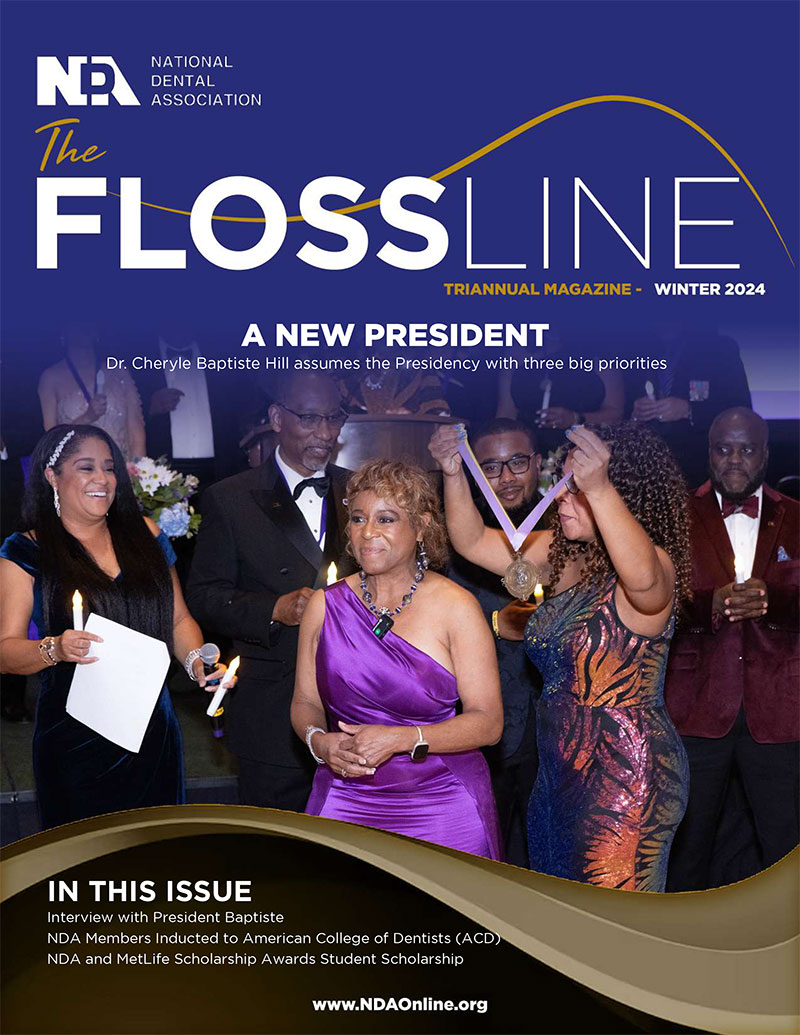April is Oral Cancer Awareness month and it sheds light on this devastating disease that impacts roughly 430,000 people annually.1 In addition, we must also acknowledge that adverse oral cancer outcomes are not evenly distributed. For instance, non-Hispanic Black men experience worse outcomes and elevated oral cancer mortality risk compared to their white counterparts. This disparity is multifactorial and has been attributed to several factors, including access to quality, culturally competent care, socioeconomic status, and social determinants of health.2
Nationally, Human Papillomavirus (HPV)-related oral cancer incidence has increased over the last two decades. HPV-related oral cancer cases are rising among white males, young people, and adults in higher socioeconomic communities3,4. Conversely, HPV-negative oral cancer accounts for less of the overall burden, but has a poor survival prognosis. Our latest research5 suggest that HPV(-) patients, especially those in low-income communities, may not be receiving adequate or timely oral cancer screenings from providers. What’s more, even within low-income communities or census-tracts, we found the racial disparity remains, where non-Hispanic Black adults with oral cancer were more likely to experience delays in detection and treatment initiation, to not receive radiation therapy, and to die within two years of diagnosis. Therefore, oral cancer disparities among Black populations remain despite changes in oral cancer trends.
Challenges
A significant challenge in addressing inequities in oral cancer is detection. Oral cancer is often asymptomatic in its early stages, making it challenging to diagnose until it has progressed to a more advanced stage. Black populations are more likely to be diagnosed with advanced oral cancer than white populations,6 which suggests that there are disparities in access to proper screening and detection.
Delayed treatment is another issue that contributes to oral cancer disparities. Even when patients are diagnosed with oral cancer at the same stage, Black and Hispanic populations are more likely to experience delayed treatment than white populations.5 This delay may be due to a lack of access to care, financial barriers, or other social determinants of health.
Lack of quality and cultural competency of care is also an essential issue contributing to oral cancer inequities. Black and Hispanic populations are more likely to receive lower quality of care than white populations, including less aggressive treatment resulting in lower rates of survival. This disparity can be attributed to bias and discrimination within the healthcare system and/or a lack of cultural competence among healthcare providers.
Opportunities
Providing local, equitable economic opportunities and initiatives to build and distribute wealth in underserved and historically marginalized communities is essential to addressing oral health inequities, as our research reveals the importance of higher socioeconomic status on oral health outcomes.
Increasing community awareness of oral cancer risks, prevention and treatment is encouraged. However, without access to affordable, quality, and timely prevention and treatment modalities, awareness of any oral cancer type can only go so far. Supporting the expansion of health insurance for working-age adults will help increase access to health providers financially7.
The reduction in tobacco use among those of higher socioeconomic statuses have helped to lower HPV(-) oral cancer rates among them, therefore, implementing or expanding targeted individual and community-level culturally competent tobacco control measures, especially in lower SES census tracts and in Black communities, may help reduce tobacco use in those populations as well.
Lastly, federal, state, and local support for a diverse, interprofessional health workforce that serves low-income rural and urban areas will also help to broaden physical and financial access to culturally competent care. The integration of health care services and the implementation of patient-centered care models (i.e. teledentistry, community health workers) can also be performed on a community level to help facilitate closing the gaps in oral cancer inequities.
Overall, there are shifts in national trends in oral cancer, but disparities remain. Although there are many factors that contribute to oral cancer inequities, there are also opportunities to eliminating them. It will require federal, state and community-led interventions that target community and individual level factors to improve outcomes in oral cancer for everyone.
- https://seer.cancer.gov/statfacts/html/oralcav.html
- Smith PD, Murray M, Bailey T, Peterson CE, Bekoe O, Weatherspoon DJ. A community-based participatory protocol to improving communication with Black men about oral and pharyngeal cancers: Research protocol. PLoS One. 2023 Aug 17;18(8):e0288478. doi: 10.1371/journal.pone.0288478. PMID: 37590209; PMCID: PMC10434892.
- Satcher D, Nottingham JH. Revisiting Oral Health in America: A Report of the Surgeon General. Am J Public Health. 2017;107(Suppl 1):S32-S33. doi:10.2105/AJPH.2017.303687
- National Institutes of Health. Oral Health in America: Advances and Challenges. Bethesda, MD: US Department of Health and Human Services, National Institutes of Health, National Institute of Dental and Craniofacial Research, 2021
- Semprini, J. and Williams, J. (2023) Community socioeconomic status and rural/racial disparities in HPV−/+ head and neck cancer. Technical Innovations & Patient Support in Radiation Oncology. Vol 26. https://doi.org/10.1016/j.tipsro.2023.100205
- Shepperd JA, Howell JL, Logan H. A survey of barriers to screening for oral cancer among rural Black Americans. Psychooncology. 2014;23(3):276-282. doi:10.1002/pon.3415
- Moss HA, Wu J, Kaplan SJ, Zafar SY. The Affordable Care Act’s Medicaid Expansion and Impact Along the Cancer-Care Continuum: A Systematic Review. JNCI: Journal of the National Cancer Institute. 2020;112(8):779-791. doi:10.1093/jnci/djaa043


